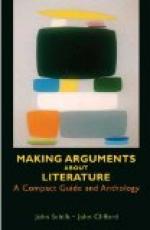Having for years given much thought to this subject, I became some time since impressed with the view that probably in yellow fever, as in the malarial fevers, there is an “intermediate host.” I therefore suggested to Dr. Reed, president of the board appointed upon my recommendation for the study of this disease in the island of Cuba, that he should give special attention to the possibility of transmission by some insect, although the experiments of Finlay seemed to show that this insect was not a mosquito of the genus Culex, such as he had used in his inoculation experiments. I also urged that efforts should be made to ascertain definitely whether the disease can be communicated from man to man by blood inoculations. Evidently if this is the case the blood must contain the living infectious agent upon which the propagation of the disease depends, notwithstanding the fact that all attempts to demonstrate the presence of such a germ in the blood, by means of microscope and culture methods, have proved unavailing. I had previously demonstrated by repeated experiments that inoculations of yellow fever blood into lower animals—dogs, rabbits, guinea pigs—give a negative result, but this negative result might well be because these animals were not susceptible to the disease and could not be accepted as showing that the germ of yellow fever was not present in the blood. A single inoculation experiment on man had been made in my presence in the city of Vera Cruz, in 1887, by Dr. Daniel Ruiz, who was in charge of the civil hospital in that city. But this experiment was inconclusive for the reason that the patient from whom the blood was obtained was in the eighth day of the disease, and it was quite possible that the specific germ might have been present at an earlier period and that after a certain number of days the natural resources of the body are sufficient to effect its destruction, or in some way to cause its disappearance from the circulation.
This was the status of the question of yellow fever etiology when Dr. Reed and his associates commenced their investigations in Cuba during the summer of 1900. In a “Preliminary Note,” read at the meeting of the American Public Health Association, October 22, 1900, the board gave a report of three cases of yellow fever which they believed to be direct results of mosquito inoculations. Two of these were members of the board, viz., Dr. Jesse W. Lazear and Dr. James Carroll, who voluntarily submitted themselves to the experiment. Dr. Carroll suffered a severe attack of the disease and recovered, but Dr. Lazear fell a victim to his enthusiasm and died in the cause of science and humanity. His death occurred on September 25, after an illness of six days’ duration. About the same time nine other individuals who volunteered for the experiment were bitten by infected mosquitoes—i.e. by mosquitoes which had previously been allowed to fill themselves with blood from yellow fever cases—and in these




